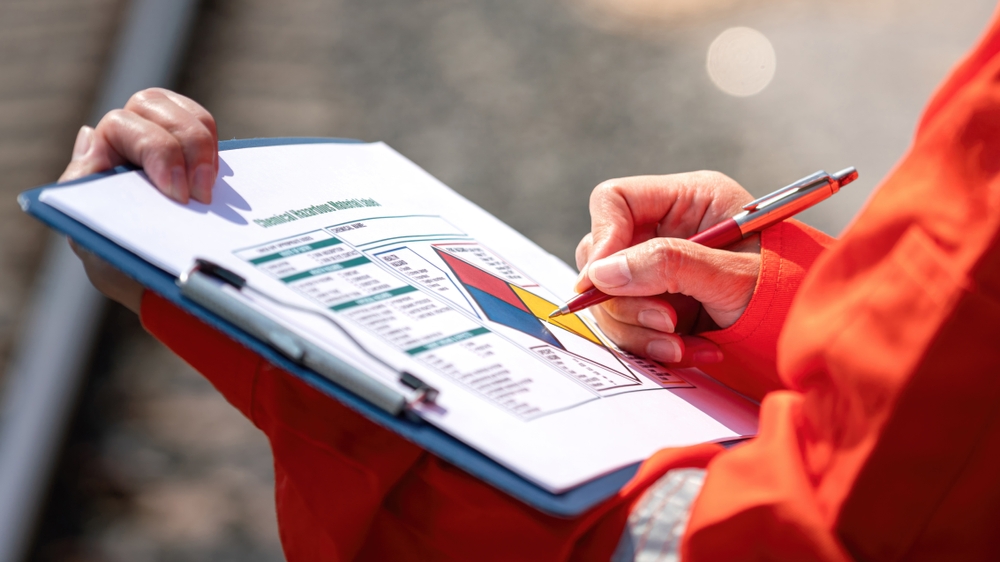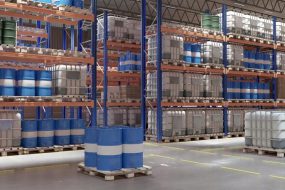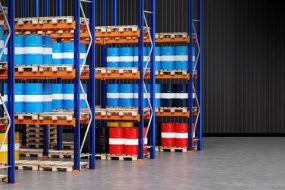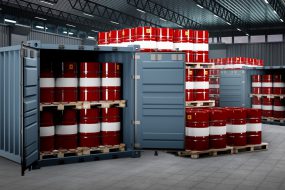

Shipping dangerous goods is an integral part of supply chain management that requires careful attention and strict compliance with regulations. Transporting hazardous materials comes with special challenges and requires a solid understanding of safety rules, industry standards, and legal requirements. As the global market grows and cities expand, the safe and complianttransport of dangerous goodsbecomes even more critical. This article discusses best practices for shipping hazardous goods and highlights the need for flexibility and efficiency in this complicated area.
Understanding dangerous goods transport
Dangerous goods, or hazardous materials, can harm health, safety, and the environment. This category includes chemicals, flammable liquids, gases, explosives, and radioactive materials. Transporting dangerous goods involves many rules to reduce risks and ensure safe handling at every stage of the supply chain.


The complexity of regulations
The regulatory landscape fordangerous goods shippingis multifaceted, with international, national, and local regulations intersecting to form a comprehensive framework. Key international regulations include the International Maritime Dangerous Goods (IMDG) Code, the International Air Transport Association (IATA) Dangerous Goods Regulations, and United Nations Recommendations on Transport Dangerous Goods.
These rules provide clear guidelines for classifying, packing, labelling, and documenting hazardous cargo. This helps ensure safe shipping practices. It’s important to follow these regulations, as not doing so can lead to serious penalties and pose risks to public safety.
Related article: The Benefits of Multimodal Transportation and Why It’s Worth It
Best practices for shipping dangerous goods
Implementing best practices intransporting dangerous goodsis essential for ensuring safety and compliance. These practices encompass several critical areas, including risk assessment, training, packaging, labelling, and documentation.
Comprehensive risk assessment
A thorough risk assessment is the foundation of safe and effective shipping of dangerous goods. This involves identifying potential hazards, evaluating the associated risks, and implementing measures to mitigate these risks. Risk assessments should be conducted at every stage of the supply chain, from packaging and labelling to transport and delivery.
Specialised training
Training is a cornerstone of dangerous goods transport. Personnel involved in the handling and shipping hazardous materials must receive specialised training to ensure they understand the complexities of the regulations and can effectively manage the associated risks. Training programs should be comprehensive and regularly updated to reflect changes in rules and industry practices.
Robust packaging solutions
Packaging plays a crucial role in the safe transport of dangerous goods. Packaging solutions must be robust, durable, and capable of containing hazardous materials without leakage or damage. The selection of appropriate packaging materials and designs is governed by strict regulatory standards, which specify requirements for different classes of dangerous goods.
Accurate labelling and documentation
Labeling and documentation are crucial for shipping dangerous goods. Proper labelling ensures everyone knows what is inside the package and how to handle it safely. It’s also essential to prepare and keep shipping papers, manifests, and certificates carefully to follow all rules and regulations.
Leveraging technology for efficiency
Technology integration into the logistics and supply chain sectors has revolutionised the transportation of dangerous goods. Advanced technologies offer innovative solutions for enhancing efficiency, traceability, and safety in hazardous cargo shipping.
Related article: The Impact of 5G Technology in Transforming Logistics and Transportation
Blockchain for transparency and traceability
Blockchain technology provides a decentralised and immutable ledger that enhances transparency and traceability when transporting dangerous goods. By recording every transaction and movement of hazardous materials on the blockchain, stakeholders can access real-time information and ensure the integrity of the supply chain. This transparency aids in regulatory compliance and fosters trust among all parties involved.
IoT for real-time monitoring
The Internet of Things (IoT) facilitates real-time monitoring of dangerous goods during transit. IoT-enabled sensors can track temperature, humidity, and pressure, providing valuable data to ensure conditions remain within safe parameters. This real-time monitoring capability allows for proactive risk management and immediate response to deviations from safety standards.
Artificial intelligence for predictive analytics
Artificial intelligence (AI) enhances the ability to predict and mitigate risks in transporting dangerous goods. AI algorithms can forecast potential hazards and suggest preventive measures by analysing historical data and identifying patterns. This predictive capability enables businesses to optimise logistics operations and enhance overall safety.
Related article: Exploring the Future of Supply Chain Transparency with Blockchain Technology
Adapting to emerging trends
The landscape of dangerous goods transport is continually evolving, influenced by emerging trends such as urbanisation, e-commerce growth, and sustainability. Adapting to these trends requires a forward-thinking approach and a commitment to continuous improvement.
Navigating urbanisation challenges
As urbanisation intensifies, the demand for efficient and sustainable transportation solutions for dangerous goods grows. Urban areas present unique challenges, including congestion, restricted access, and increased regulatory scrutiny. Businesses must develop innovative logistics strategies that address these challenges while maintaining compliance and safety.
E-commerce growth and its impact
The rise of e-commerce has transformed the logistics landscape, increasing the volume and complexity of shipments, including those involving dangerous goods. E-commerce businesses must adapt their logistics operations to accommodate the rapid pace of online sales while ensuring compliance with hazardous cargo shipping regulations. This requires a strategic focus on efficiency, scalability, and customer-centric solutions.
Embracing Sustainability
Sustainability is a critical consideration in the transportation of dangerous goods. Businesses are increasingly expected to minimise their environmental impact and adopt eco-friendly practices. This includes optimising transport routes, utilising energy-efficient vehicles, and reducing waste in packaging and operations. Embracing sustainability enhances corporate responsibility and aligns with evolving consumer preferences and regulatory expectations.
Key takeaway
Shipping dangerous goods is a complex and dynamic process that demands a comprehensive understanding of regulations, best practices, and emerging trends. By prioritising safety, compliance, and innovation, businesses can navigate the challenges of hazardous cargo shipping and capitalise on the opportunities presented by a rapidly evolving logistics landscape. Adaptability and efficiency remain paramount as the industry transforms, ensuring thesafe and effective transport of dangerous goods globally.
Contact us today to learn more about our chemical and dangerous goods services.




